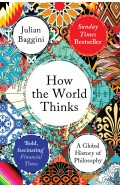The Holy Roman Empire: A Short History: Hardcover
By: Barbara Stollberg-rilin
-
Rs 3,595.50
- Rs 3,995.00
- 10%
You save Rs 399.50.
Due to constant currency fluctuation, prices are subject to change with or without notice.
A new interpretation of the Holy Roman Empire that reveals why it was not a failed state as many historians believe The Holy Roman Empire emerged in the Middle Ages as a loosely integrated union of German states and city-states under the supreme rule of an emperor. Around 1500, it took on a more formal structure with the establishment of powerful institutions-such as the Reichstag and Imperial Chamber Court-that would endure more or less intact until the empire's dissolution by Napoleon in 1806. Barbara Stollberg-Rilinger provides a concise history of the Holy Roman Empire, presenting an entirely new interpretation of the empire's political culture and remarkably durable institutions. Rather than comparing the empire to modern states or associations like the European Union, Stollberg-Rilinger shows how it was a political body unlike any other-it had no standing army, no clear boundaries, no general taxation or bureaucracy. She describes a heterogeneous association based on tradition and shared purpose, bound together by personal loyalty and reciprocity, and constantly reenacted by solemn rituals. In a narrative spanning three turbulent centuries, she takes readers from the reform era at the dawn of the sixteenth century to the crisis of the Reformation, from the consolidation of the Peace of Augsburg to the destructive fury of the Thirty Years' War, from the conflict between Austria and Prussia to the empire's downfall in the age of the French Revolution. Authoritative and accessible, The Holy Roman Empire is an incomparable introduction to this momentous period in the history of Europe.
A new interpretation of the Holy Roman Empire that reveals why it was not a failed state as many historians believe The Holy Roman Empire emerged in the Middle Ages as a loosely integrated union of German states and city-states under the supreme rule of an emperor. Around 1500, it took on a more formal structure with the establishment of powerful institutions-such as the Reichstag and Imperial Chamber Court-that would endure more or less intact until the empire's dissolution by Napoleon in 1806. Barbara Stollberg-Rilinger provides a concise history of the Holy Roman Empire, presenting an entirely new interpretation of the empire's political culture and remarkably durable institutions. Rather than comparing the empire to modern states or associations like the European Union, Stollberg-Rilinger shows how it was a political body unlike any other-it had no standing army, no clear boundaries, no general taxation or bureaucracy. She describes a heterogeneous association based on tradition and shared purpose, bound together by personal loyalty and reciprocity, and constantly reenacted by solemn rituals. In a narrative spanning three turbulent centuries, she takes readers from the reform era at the dawn of the sixteenth century to the crisis of the Reformation, from the consolidation of the Peace of Augsburg to the destructive fury of the Thirty Years' War, from the conflict between Austria and Prussia to the empire's downfall in the age of the French Revolution. Authoritative and accessible, The Holy Roman Empire is an incomparable introduction to this momentous period in the history of Europe.
The Holy Roman Empire: A Short History: Hardcover
By: Barbara Stollberg-rilin
Rs 3,595.50 Rs 3,995.00 Ex Tax :Rs 3,595.50
Zubin Mehta: A Musical Journey (An Authorized Biography)
By: VOID - Bakhtiar K. Dadabhoy
Rs 840.00 Rs 1,050.00 Ex Tax :Rs 840.00
Infinite Powers: The Story of Calculus - The Language of the Universe (PB)
By: Steven Strogatz
Rs 1,885.50 Rs 2,095.00 Ex Tax :Rs 1,885.50
How the World Thinks: A Global History of Philosophy
By: Julian Baggini
Rs 3,295.00 Ex Tax :Rs 3,295.00
The Emperor's New Road: China and the Project of the Century
By: Jonathan E Hillman
Rs 3,916.00 Rs 4,895.00 Ex Tax :Rs 3,916.00
The Origins of Political Order From Prehuman Times to the French RevolutioN
By: Francis Fukuyama
Rs 3,895.00 Ex Tax :Rs 3,895.00
Manning Up: How the Rise of Women Has Turned Men into Boys
By: Kay Hymowitz
Rs 995.00 Ex Tax :Rs 995.00
The Obama Syndrome: Surrender At Home War Abroad
By: Tariq Ali
Rs 1,036.00 Rs 1,295.00 Ex Tax :Rs 1,036.00
The Quest For Meaning: Developing A Philosophy Of Pluralism
By: Tariq Ramadan
Rs 1,116.00 Rs 1,395.00 Ex Tax :Rs 1,116.00
The Pakistan US Conundrum Jihadists The Military And The People The Struggle For Control
By: Yunas Samad
Rs 1,116.00 Rs 1,395.00 Ex Tax :Rs 1,116.00
An Enemy We Created: The Myth Of The Taliban Al Qaeda Merger In Afghanistan 19702010
By: Alex Strick van Linschoten
Rs 5,250.00 Ex Tax :Rs 5,250.00
WikiLeaks: Inside Julian Assanges War on Secrecy
By: David Leigh & Luke Harding
Rs 850.00 Ex Tax :Rs 850.00
Infinite Powers: The Story of Calculus - The Language of the Universe (PB)
By: Steven Strogatz
Rs 1,885.50 Rs 2,095.00 Ex Tax :Rs 1,885.50
How the World Thinks: A Global History of Philosophy
By: Julian Baggini
Rs 3,295.00 Ex Tax :Rs 3,295.00
The Emperor's New Road: China and the Project of the Century
By: Jonathan E Hillman
Rs 3,916.00 Rs 4,895.00 Ex Tax :Rs 3,916.00
No recently viewed books available at the moment.
Zubin Mehta: A Musical Journey (An Authorized Biography)
By: VOID - Bakhtiar K. Dadabhoy
Rs 840.00 Rs 1,050.00 Ex Tax :Rs 840.00
The Holy Roman Empire: A Short History: Hardcover
By: Barbara Stollberg-rilin
Rs 3,595.50 Rs 3,995.00 Ex Tax :Rs 3,595.50
Infinite Powers: The Story of Calculus - The Language of the Universe (PB)
By: Steven Strogatz
Rs 1,885.50 Rs 2,095.00 Ex Tax :Rs 1,885.50
How the World Thinks: A Global History of Philosophy
By: Julian Baggini
Rs 3,295.00 Ex Tax :Rs 3,295.00
The Emperor's New Road: China and the Project of the Century
By: Jonathan E Hillman
Rs 3,916.00 Rs 4,895.00 Ex Tax :Rs 3,916.00














-120x187.jpg?q6)







-120x187.jpg?q6)
-120x187.jpg?q6)


-120x187.jpg?q6)



-120x187.jpg?q6)



